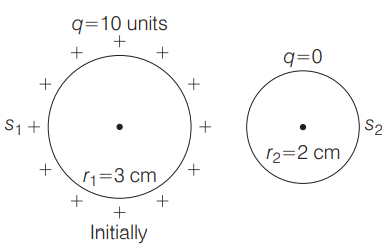Q. A conducting sphere $S_{1}$ of radius $r_{1}$ is connected by a conducting wire to another conducting sphere $S_{2}$ of radius $r_{2}$, where $r_{1}=3\, cm$ and $r_{2}=2\,cm$. Before they are connected, $S_{1}$ carries charge of $10$ units. The electric potential at the point which is at a distance $4\, cm$ from the centre of $S_{1}$ and a distance $3\, cm$ from the centre of $S_{2}$ is
TS EAMCET 2018
Solution:

